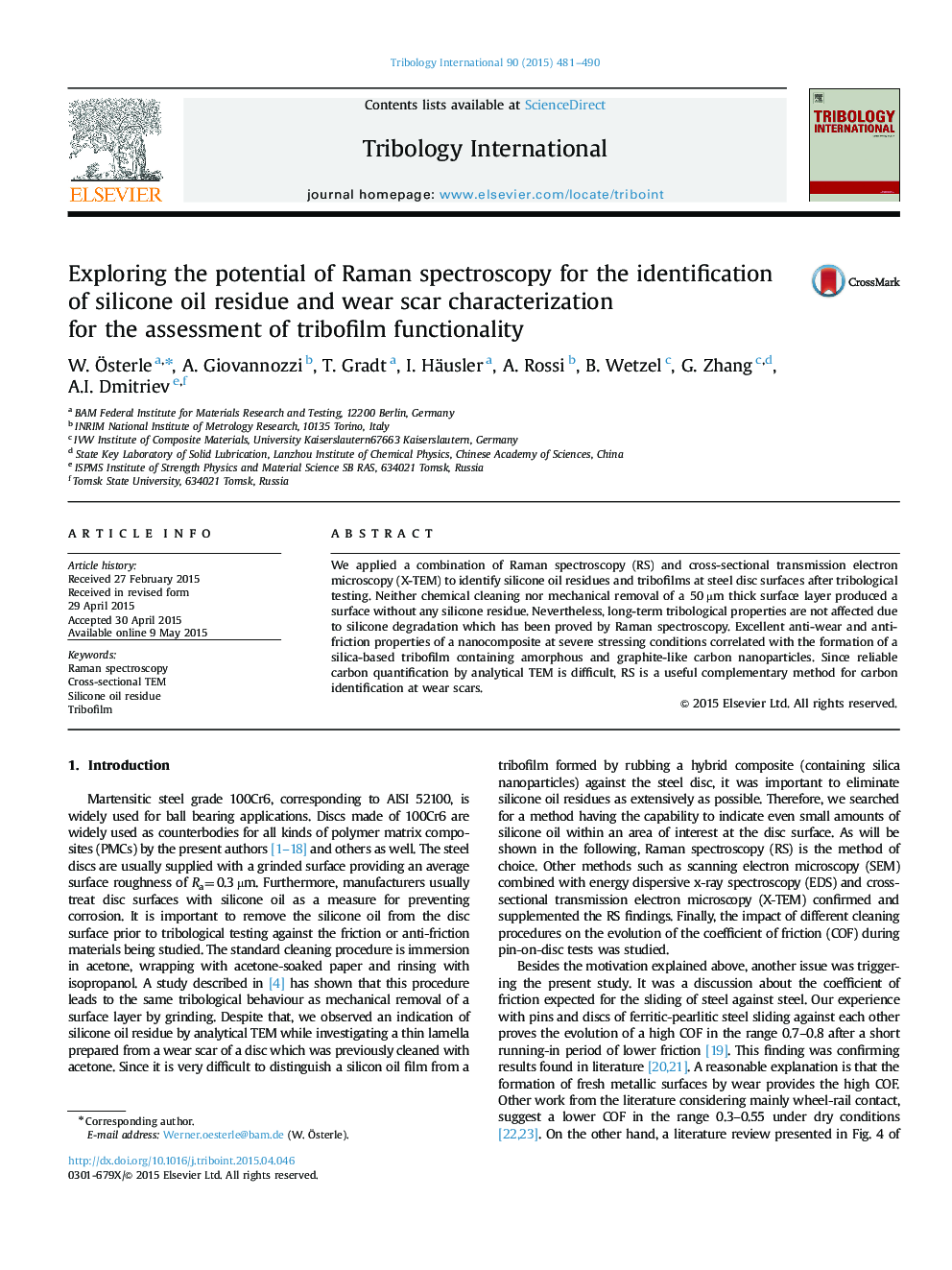| Article ID | Journal | Published Year | Pages | File Type |
|---|---|---|---|---|
| 7003069 | Tribology International | 2015 | 10 Pages |
Abstract
We applied a combination of Raman spectroscopy (RS) and cross-sectional transmission electron microscopy (X-TEM) to identify silicone oil residues and tribofilms at steel disc surfaces after tribological testing. Neither chemical cleaning nor mechanical removal of a 50 µm thick surface layer produced a surface without any silicone residue. Nevertheless, long-term tribological properties are not affected due to silicone degradation which has been proved by Raman spectroscopy. Excellent anti-wear and anti-friction properties of a nanocomposite at severe stressing conditions correlated with the formation of a silica-based tribofilm containing amorphous and graphite-like carbon nanoparticles. Since reliable carbon quantification by analytical TEM is difficult, RS is a useful complementary method for carbon identification at wear scars.
Related Topics
Physical Sciences and Engineering
Chemical Engineering
Colloid and Surface Chemistry
Authors
W. Ãsterle, A. Giovannozzi, T. Gradt, I. Häusler, A. Rossi, B. Wetzel, G. Zhang, A.I. Dmitriev,
